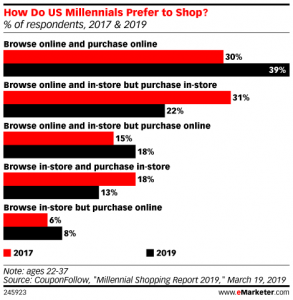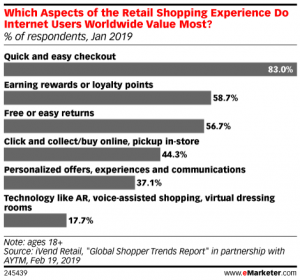Standing out from the competition crowd will take a focused effort to build an effective user experience. Ignore it and you could be left behind. Make it a top priority, invest in it now and you could become an industry leader. The choice is yours to make.
The empowered health consumer is single-handedly redefining the healthcare industry. They are no longer passive patients, but instead must be viewed (and treated) as informed consumers. And how you meet their shifting top priority will determine what industry players survive and which will be pushed out.
The most important trend to watch?
User experience.
Merely “selling” a product is not 21st-century marketing.
Consumers want to be given a full purchasing experience. They want to have control over not just what they buy but how they buy. At the center of this emerging trend: immediate access to information.
Purchase updates that used to take days now take seconds. Monitoring when a package will arrive now can be tracked in real-time on a mobile app. Hours spent comparison shopping in retail stores can all be done by visiting a single website.
The truth is, if your product doesn’t offer high value and convenience, then consumers don’t want it.
With the saturation of ultra-service companies like Amazon and Uber, consumers have come to expect fast, affordable, and customer-centered options. What they expect from their healthcare providers is no exception.
And the largest force behind the shift in consumer top priority? Millennials.
With Millennials estimated to spend $1.4 trillion in 2020, studying how this demographic shops and what it expects from a brand is mission-critical.

And this online shopping preference extends well into healthcare. A recent survey found.
that 73% of Millennials search for medical advice online instead of going to the doctor.
Why?
The immediacy of answers.
Consumers are not willing to wait in line for their latte, let alone for medical care. And with the emergence of health apps, online medical forums, and telemedicine, they don’t have to.
Medical providers and health brands must take note. Consumers are no longer skeptical of health alternatives. Consumers trust online searches. More and more, consumers are starting to view the doctor as a backup plan (at most).
The inevitable result?
Going to the doctor will become a “commodity service”.
In a world where low-cost options will win out, offering significant added value will be the only way to attract and convert the informed consumer.
And as medical pricing transparency limits how much wellness providers charge, having a highly-tailored and seamless user experience will be the key differentiator.
Not sure where to start?
Taking a page out of the retail marketing playbook makes it clear: convenience is king. Brand loyalty is a thing of the past. If your brand can’t compete on ease of use, you’re dead in the water.

Pinpointing how your customers buy, why they buy when they buy, and what they really want from brands is the only way to build marketing campaigns that generate ROI.
Shortcut any one of these areas, and you’ll lose market share fast. The empowered consumer is just that: powerful. Be sure to play your marketing hand wisely.
